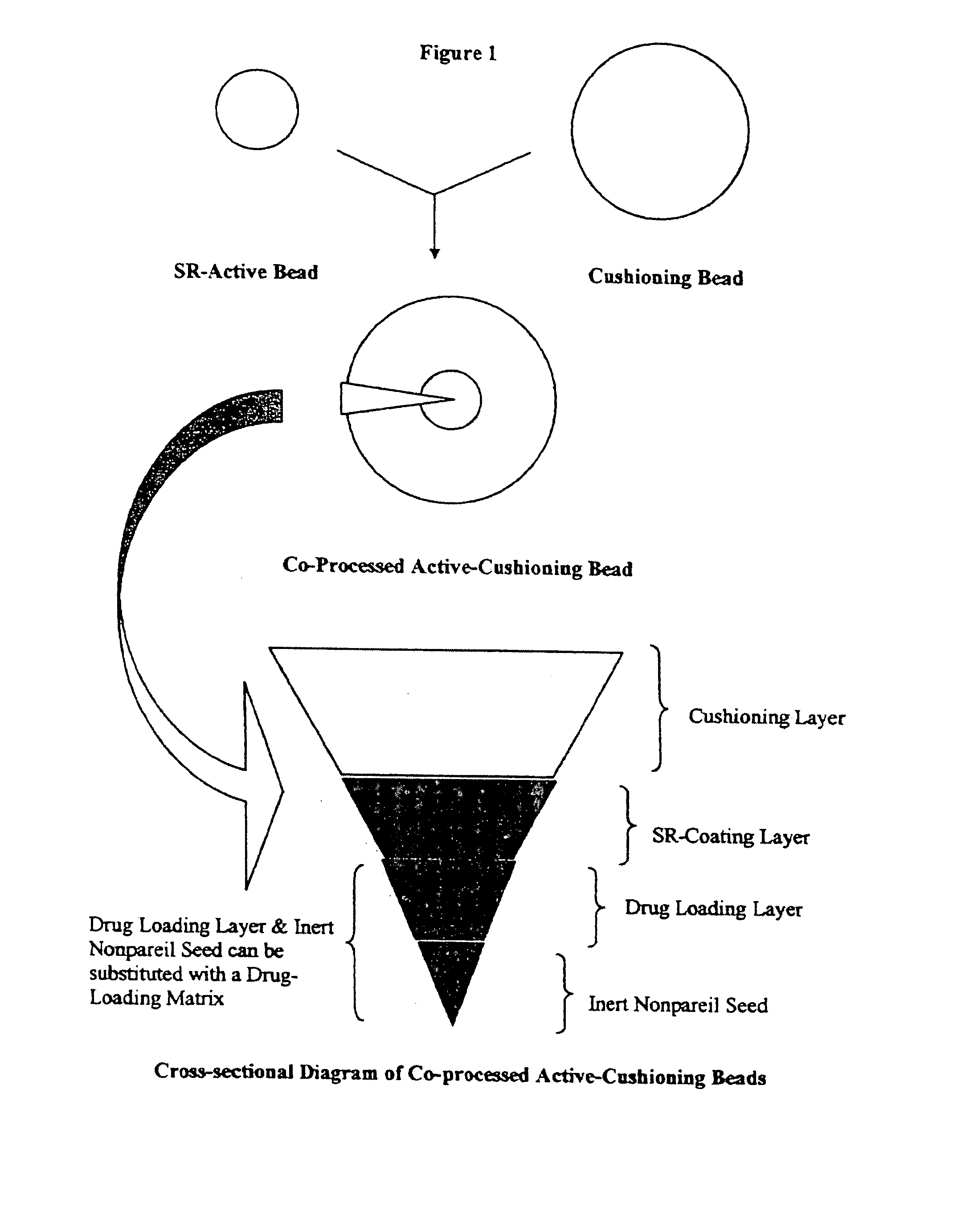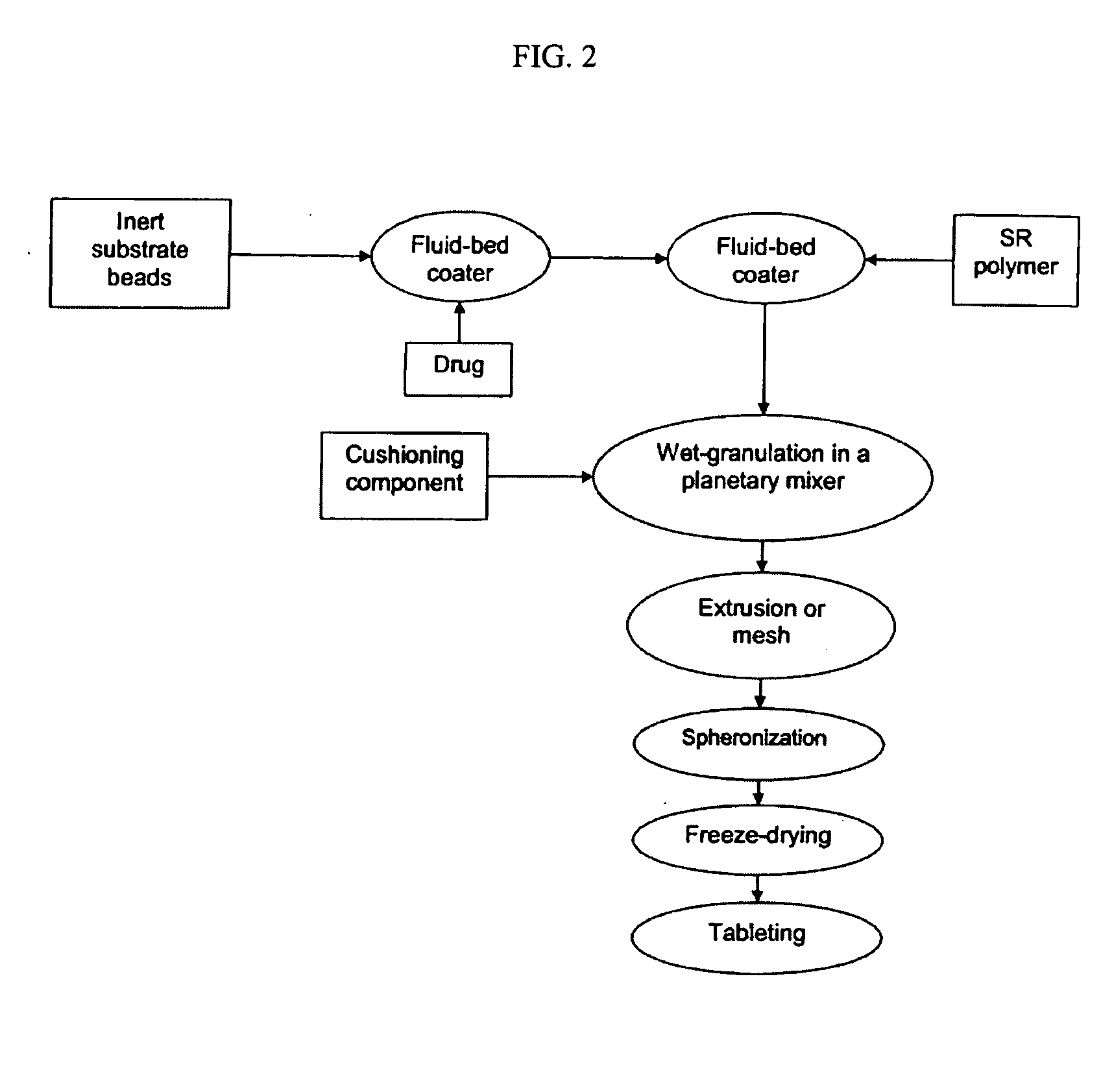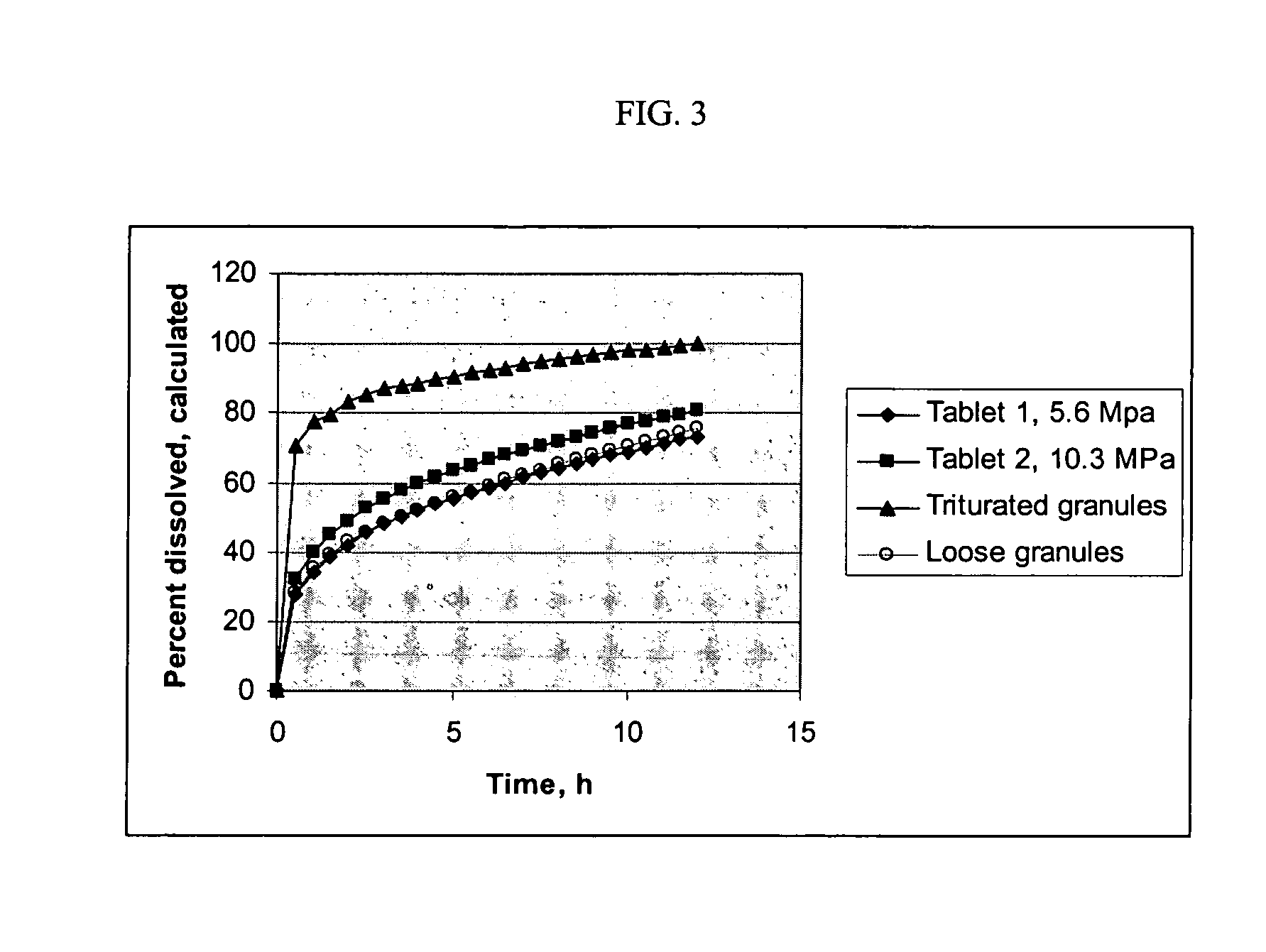Methods for making pharmaceutical dosage forms containing active cushioning components
a technology of active cushioning and dosage forms, which is applied in the direction of drug compositions, microcapsules, dispersed delivery, etc., can solve the problems of adversely affecting the disintegration properties of tablets, affecting the composition, and unsure limitations still exist, and achieves uniform composition and robust
- Summary
- Abstract
- Description
- Claims
- Application Information
AI Technical Summary
Benefits of technology
Problems solved by technology
Method used
Image
Examples
example 1
6.1 Example 1
Example 1 describes a non-limiting method for preparing an active cushioning component of the invention, where an admixture comprising a placebo cushioning component and active-loaded particles was freeze-dried and spheronized and compressed into a tablet.
Phase I: Manufacture of Active-Loaded Particles
The manufacture of prednisolone sodium phosphate-loaded beads was carried out by a conventional drug-layering process. The active drug was dissolved in an aqueous dispersion of Opadry® clear, and the resultant dispersion was sprayed onto non-pareil seeds (Celpheres®) on a fluid-bed processor equipped with a Wurster column. The formulation of active drug composition is shown in Table 2.
TABLE 2Formulation of Drug-Layering DispersionPrednisolone Sodium Phosphate12.0%Opadry ® Clear 2.0%Purified Waterq.s.
A dispersion of sustained-release coating dispersion was then sprayed onto the active-loaded non-pareil seeds in a manner similar to that described above. The formulati...
example 2
6.2 Example 2
Example 2 describes two non-limiting embodiments of the invention describing how an active-loaded drug bead (Tablet 3) and an uncoated freeze-dried, placebo drug bead (milled and sieved after freeze-drying) (Tablet 4) could be prepared. The formulations of these tablets are provided in Table 10.
TABLE 10Tablets formed sing coated and uncoated active-agent beads.Tablet 4: SodiumTablet 3: VitaminPhenylbutyrateComponentsC, 250 mg / tablet400 mg / tabletDrug beadsCoated with up to264 mg—5% weight gainwith Opadry)Uncoated (80%— 500 mgdrug load)MilledTypical size 80 mg 400 mgFreeze-distribution, %Driedgreater than:Cushioning0.25 mm, 40.3%Component0.18 mm, 24.3%0.10 mm, 16.8%0.09 mm, 3.7%0.075 mm, 4.0%<0.075 mm, 10.9%FillersPearlitol 200SD 60 mg 90 mgXylisorb 300 60 mg—FlavorOrange Flavor 1 mg—(Firmenich NNA)LubricantsSodium stearyl 5 mg—fumarateMagnesium 10 mgstearateTotal tablet weight500 mg1000 mg
Tablet 3 is expected to form an orally disintegrating tablet, i.e., a tabl...
example 3
6.3 Example 3
Example 3 describes a non-limiting process for preparing active cushioning components comprising freeze-dried placebos (milled and sieved after freeze-drying), coated active-loaded particles, and excipients. Example 3 also describes non-limiting ranges for each step in the process for placebo tablets and active-loaded tablets.
Tablets 5-10 were prepared as follows: i) Freeze-dried beads (prepared as described in U.S. Pat. No. 5,780,055 were milled and sieved through a 35 mesh US Standard screen; ii) All excipients and the active-loaded particles in Table 11 were accurately weighed out and passed through a screen; iii) All excipients except the lubricant were mixed until uniform in a suitable container; iv) The lubricant was added to the blend and the blend was mixed until uniform; and v) Tablets weighing about 350 mg were compressed on a Manesty D3B tablet press.
The formulations of the tablets are provided in Table 11.
TABLE 11Tablet formulations.Tablet formul...
PUM
| Property | Measurement | Unit |
|---|---|---|
| particle size | aaaaa | aaaaa |
| particle size | aaaaa | aaaaa |
| particle size | aaaaa | aaaaa |
Abstract
Description
Claims
Application Information
 Login to View More
Login to View More - R&D
- Intellectual Property
- Life Sciences
- Materials
- Tech Scout
- Unparalleled Data Quality
- Higher Quality Content
- 60% Fewer Hallucinations
Browse by: Latest US Patents, China's latest patents, Technical Efficacy Thesaurus, Application Domain, Technology Topic, Popular Technical Reports.
© 2025 PatSnap. All rights reserved.Legal|Privacy policy|Modern Slavery Act Transparency Statement|Sitemap|About US| Contact US: help@patsnap.com



